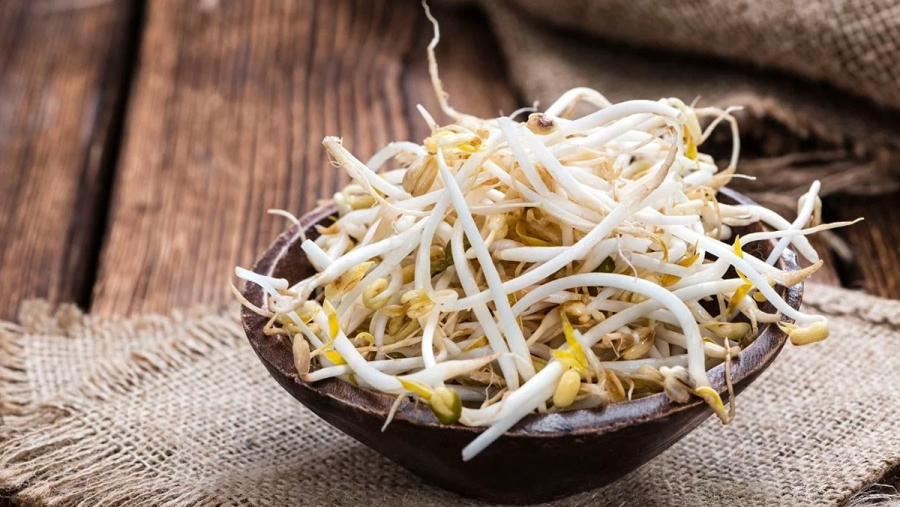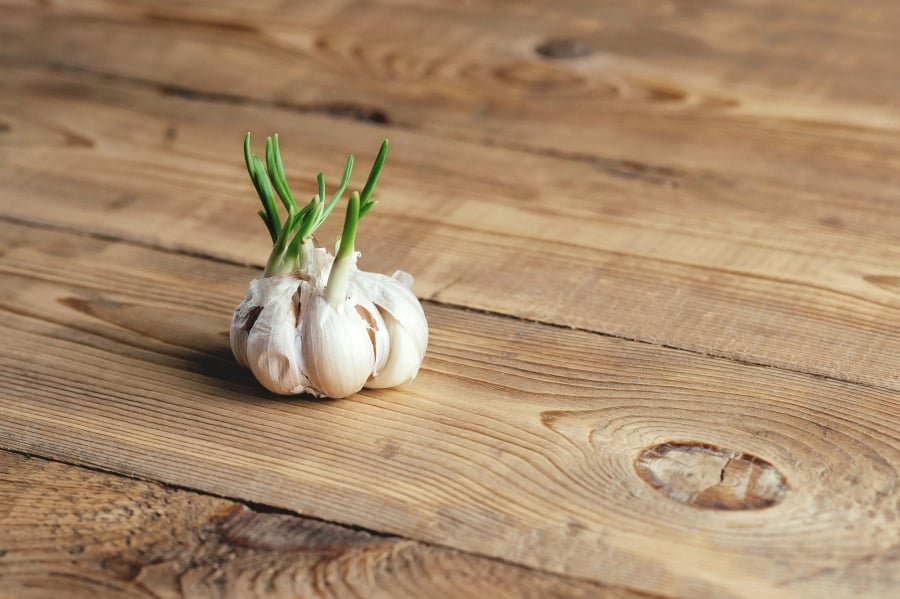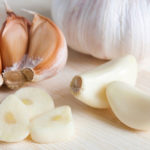1. Soybeans and Green Beans
Soybeans and green beans are extremely valuable sources of nutrients. When they sprout, they become soybean sprouts or mung bean sprouts, carrying a large amount of nutritional value. Diverse in preparation and rich in fiber, soybeans and green beans are not only sources of free amino acids, but also particularly noteworthy sources of plant protein.
Each 100g of unsprouted soybeans or green beans contains 0.35g of free amino acids, which increases to 0.5g after sprouting for one day and reaches 1.5g on the fifth day. During this process, the amount of plant protein in the bean sprouts also increases, while the amount of hard-to-digest substances decreases.

The sprouting process also increases the content of vitamin C and vitamin E, two important nutrients. Vitamin C is especially effective in strengthening the body’s immune system. After sprouting, soybeans also contain high levels of isoflavones, which are beneficial for female hormones.
In addition, mung bean sprouts and soybean sprouts provide riboflavin, a substance that prevents cell aging, reduces inflammation, and prevents oral problems such as mouth sores and gum inflammation. However, to ensure health safety, the consumption of unsprouted soybean sprouts (mung bean sprouts) should be limited, as they may contain harmful substances accumulated from the cultivation process and the use of chemicals.
2. Garlic
Many people mistakenly believe that sprouted garlic should not be eaten because it can be harmful to health. However, the fact is that garlic sprouts are not only safe but also very nutritious, with twice the amount of nutrients compared to regular garlic and completely free of toxins, especially after being thoroughly cooked. Garlic sprouts are known for their outstanding antioxidant content, making them a valuable source of nutrients, especially on the fifth day after sprouting.
Studies have shown that garlic sprouts contain higher levels of antioxidants than fresh garlic, helping to prevent cancer cell formation and slow down the aging process.

Garlic sprouts or garlic scapes not only bring a fresh and intense flavor, but are also known as a spice with antibacterial and anti-inflammatory properties no less than garlic bulbs. In addition to antioxidants, they are also rich in fiber, vitamin A, vitamin C, and carotene. For garlic sprouts, just check if the garlic retains its color and shows no signs of mold before enjoying them.
3. Brown Rice
Sprouted brown rice activates a large amount of enzymes, including amylase, hemicellulase, protease, and oxidoreductase. This process not only transforms energy but also enhances the nutritional value of brown rice.
The molecules in sprouted brown rice become smaller, making the nutrients easier to digest and absorb compared to their normal state. Research has shown that sprouted brown rice provides a large amount of vitamins A, B, E, niacin, and pantothenic acid.
In addition, minerals such as calcium, magnesium, and other minerals in brown rice are often present in an unabsorbable form. However, when brown rice sprouts, phytase is activated, helping to break down phytic acid and release minerals. Therefore, consuming sprouted brown rice ensures the body absorbs these minerals fully.
However, it is also important to note that some foods can become “toxic” when sprouted. Specifically, potatoes, sweet potatoes, ginger, tapioca, taro, and peanuts, if sprouted, not only lose nutrients but also undergo chemical changes that can cause poisoning, digestive disorders, and even threaten life if the toxic substance level is too high.
How to Effectively Treat Fishbone Issues at Home
Everyone loves feasting on the deliciousness of fish during the holidays. But, unfortunately, choking on fish bones is an unavoidable issue that may lead to devastating consequences if left unattended for a prolonged period. Let’s see how Dien May Xanh can help us out when fish bones get stuck in our throat.



































